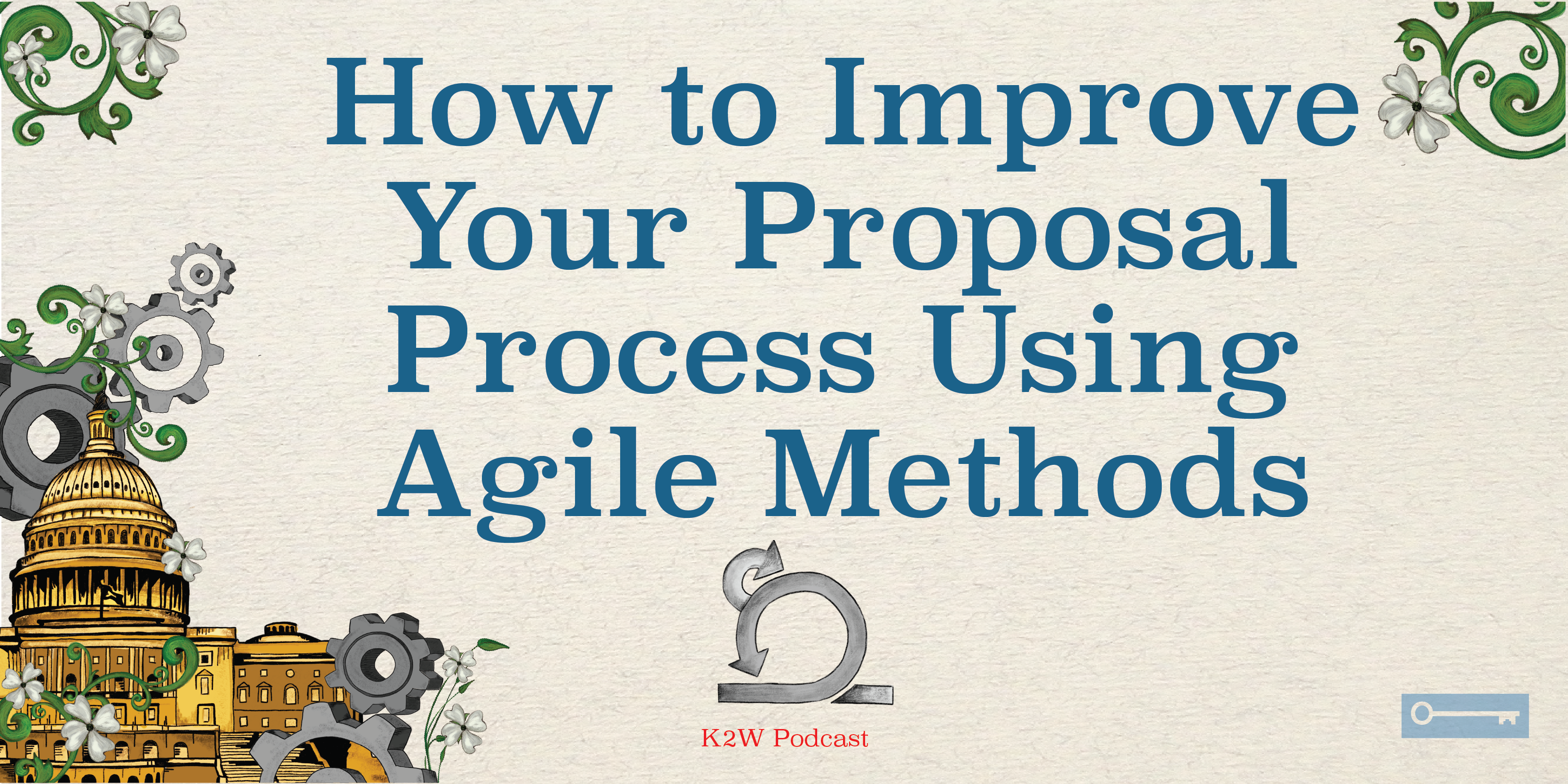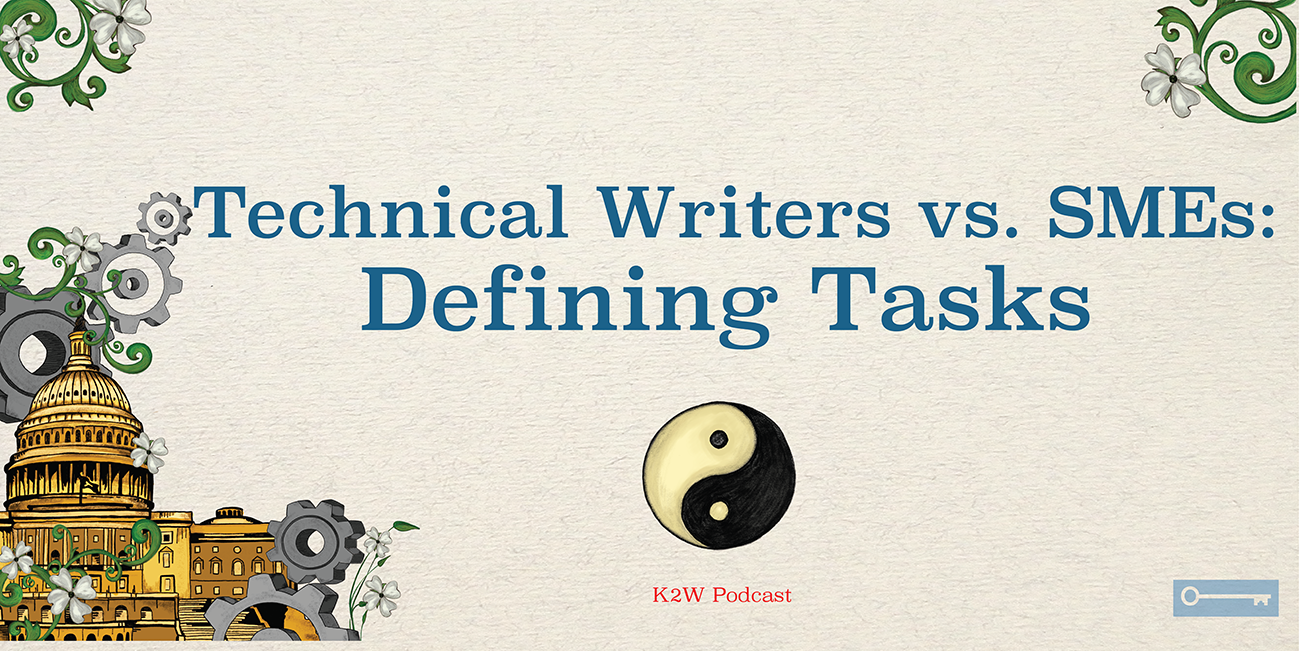Executive summaries set the tone for the entire government proposal. Learn what makes a perfect executive summary, from page length, to organizational structure, and graphics.
Featured guest: Harry Pritchett, Vice President, AOC Key Solutions
Click the orange play button to listen to the episode. You can also listen on Apple I-Tunes or Soundcloud.
If you liked this podcast check out our article.
Prefer to read? Here's the transcript.
Raymond Thibodeaux: Welcome to Keys to Winning, a podcast where we talk about government contracting topics, such as proposal development, business development, win strategies and more. Keys to Winning, produced by AOC Key Solutions, a leading bid and proposal development firm, gives you a chance to learn from leaders and experts in their fields. I am Raymond Thibodeauxau, today's host of Keys to Winning.
Raymond Thibodeaux: Today's topic: the executive summary. The executive summary supposedly encapsulates the complexities of an entire proposal in two to five easy to digest pages. That's the goal anyway - or is it?
Raymond Thibodeaux: We talk to Key Solutions long time federal proposal veteran, Harry Pritchett, about what makes an executive summary good. Harry has spent nearly the last twenty years going from one proposal war room to another, so who better to chat with about executive summaries?
Raymond Thibodeaux: Hi Harry, thanks for being on the podcast.
Harry Pritchett: My pleasure to be here.
Raymond Thibodeaux: Some say the executive summary is a capture related document, or something developed even before a proposal effort is kicked off, mainly to give the team a solid overview of their value, proposition, maybe some win themes. So let's talk about when the executive summary should be developed, and then maybe we can start talking about what makes and executive summary good. So when should an executive summary be developed - before or after kickoff?
Harry Pritchett: I would say the answer is both, and I would agree that it's best to start it early, especially if you have a mature strategy that you're trying to set out from the beginning. But I would also say don't stop there and go ahead iteratively and prove the executive summary as the RFP is released. Maybe there's something in the RFP that you hadn't thought about during the win strategy. Information is going to be gathered and solutions are going to be matured during that process as well, and so you might discover something that's really compelling that just wasn't there during that strategy. So I would say keep improving as you go and again, it depends on the [inaudible 00:02:15]and the maturity of the strategy and I guess playing to that point but yes if you start it early that's great but don't stop there.
Raymond Thibodeaux: Okay, and it sounds like it's something that would be good to have for the kickoff but then it remains an organic document that keeps maturing as the proposal development effort continues it sounds like.
Harry Pritchett: I would say that is correct and yes, certainly it could be very helpful to the team. In some cases maybe there is a teeny part that is added after the kickoff that provides all sorts of unique capability and moving some gaps and was just a lot of unknowns during the initial. So I would say do use in that way and start thinking strategically at the beginning as you really make your big decisions. But I would say start it early and keep it going.
Raymond Thibodeaux: Before we talk about what makes a good executive summary, I want to get this little question out of the way, because it comes up in many proposals. And that is some RFP's don't require an executive summary. How or whether its scored is another matter, but even if the RFP doesn't require one, should the capture team, or the proposal development team or both include one anyway, almost as a courtesy if nothing else?
Harry Pritchett: I would say unless it's specifically prohibited, or maybe in cases of severe page count limitations, I would say an executive summary ought to be included. It's going to set the tone for the entire proposal and if you do it correctly it's going to provide that favorable first impression. It's going to help make the evaluator want to read the rest of the proposal and that's very important in today's competitive market.
Raymond Thibodeaux: Okay, and this is an overview question, kind of like a broad stroke type question, I'm half expecting a broad stroke answer back but the idea is what makes an executive summary good?
Harry Pritchett: That's a really good question. I think the most important thing is that it focuses not only on the solution and the discriminative features but really integrates that into what it is that the customer needs. So I think you've got to have a customer focus, you have to have an understanding of what the overall vision is, what are they buying? What are the shortages in products and how does your solution fit into the contents of that and how does it benefit them in ways that other offers may not? I would say those are the absolute keys.
Raymond Thibodeaux: As far as structure, I think you and I have talked about this before, and I know you've addressed this in one of your recent blogs. The executive summary, does it need to address the section L elements, or is it somehow above the structures of compliance with section L and it kind of stands on its own and tells its own story?
Harry Pritchett: I think it can follow L, but it doesn't have to. Ideally it would not be bad to do that and in some cases there's a strategy where you make it the summary of the proposal itself going in the exact same order. But I would say don't be overly focused on compliance here, unless there are some instructions in the RFP you must organize the executive summary this way and also there are some RFP's that require the proposal to have some really complex organization structure, you have sections that do not follow each other logically and you're going to be stuck with that in the proposal itself because you have to comply. There's no way around that. But, in the executive summary you're not so I would say do not get overly concerned about that and instead maybe organize it by the customer concerns. It might include the formal section M, evaluation criteria, or some known hot buttons, risks, challenges, what matters most to the customer - keeps them up at night. You're really going to be able to tell a compelling story.
Raymond Thibodeaux: Okay, and we're talking as though the executive summary is between two and five pages in length which is fairly common, but either way whether it's two pages or five pages there's not a lot of room for exhausted detail about your solution or the discriminators or the big advantages that you bring to the table. It is enough room for a decent summary of all those things, and so is there a natural tension between overview and summary versus a specific detail?
Harry Pritchett: I would say that you want to not get into the roots with the detail but you want to include enough detail to back up your claims and to have some sort of proof but it might be more of a general statement rather than a detailed table with a lot of numbers. We were talking earlier about whether you do it first or you do it as the proposal is written and I would say keep going back to the proposal to see how it's developing and maturing and then look for those things that are really compelling and then distill it down to what matters. What would an evaluator want to look at in just a few pages so they can make that decision that hey I'm excited about this I want to go ahead and read the rest of the proposal.
Raymond Thibodeaux: One of my questions was what are some things you would like to see in an executive summary, but as we've been talking I'm getting a feel for the types of things that you like to see in an executive summary. Some things that we haven't talked about are some of the visual elements and I think graphics are typically effective in the executive summary, does that kind of jive with your experience and what kinds of graphics do the best in an executive summary format?
Harry Pritchett: That's a great question. I think you definitely want some sharper visuals, you want to convey information in a precise manner, and visuals are definitely great for that. I think you want to avoid detailed flow charts, that's going to probably go in your technical approach or your management and you want to show relationships. I think it's really important. I've seen and helped develop some where you sort of have some input and challenges and then how those tie to the solution and again, you're really getting back to the customers focus and addressing their hot buttons, their concerns, what keeps them up at night. I would say graphics [inaudible 00:08:26]solutions and relationships tend to do best.
Raymond Thibodeaux: One of the graphics I often see, or at least a version of, in the executive summary are the concept of operations which is how your solution fits in with what they're asking for. Maybe that's a bad way of putting it but the idea that you visually convey your whole management and operational elements within one graphic. Is that too much for an executive summary and would shine brighter in the technical volume?
Harry Pritchett: I think it depends on the page count you have and the level of complexity of the proposal. I think it can be a mistake to get caught up in a few complicated 11 by 17 concept of operations that have to be all things to all people. On the other hand I think when it's done well it can be very compelling, it can be very powerful and so it's really a matter of that's one of the options that you have for the executive summary. It's one of the tools, but use it when it's appropriate to do so and it tells the story that you want to tell.
Raymond Thibodeaux: The structure of an executive summary is usually the grab. What the problem is, what the solution is, the team, and the competitive advantage. Basically one, two, three, four, five elements of the executive summary. Does that structure hold for government proposals generally?
Harry Pritchet: I think there's elements that could. I think it's overall a good formula. The mistake that sometimes offers make is they go overboard with the grab, and they focus too much on themselves and their capabilities and you've got to make sure the capabilities are addressing a real problem and you're not just trying to sort sell something. The standard you were talking about does talk about the problem and solution, I think that's good. But regardless of this element I think you need to start it with a customer focus and think about okay what's the customer vision? How does the product or service being procured fit within that vision? And then how does the company's proposal benefit the customer within the context of that vision so that it means something to them, and they're thinking oh this is tailored to one of the challenges that we're dealing with and it's a solution that's going to move us forward.
Raymond Thibodeaux: That's excellent. Thank you for being on the podcast Harry.
Harry Pritchett: You're welcome.
Raymond Thibodeaux: I am Raymond Thibideau and this has been Keys to Winning, from AOC Key Solutions Incorporated, or KSI, a consulting firm that has helped companies across the country win billions of dollars in federal contracts. Learn more at www.aockeysolutions.com, or follow us on LinkedIn. Be sure to subscribe for more podcasts from this series, and thank you for listening.
ABOUT KEYS TO WINNING:
Keys to Winning is a podcast that shares practical advice for GovCon professionals from industry experts. Topics covered include Proposal Development, Government Contracting, VOSBs, WOSBs, and more. Episodes are 15 minutes or less and are posted bi-weekly on Thursday morning. The podcast is hosted by Raymond Thibodeaux, a Senior Proposal Specialist with AOC Key Solutions.








